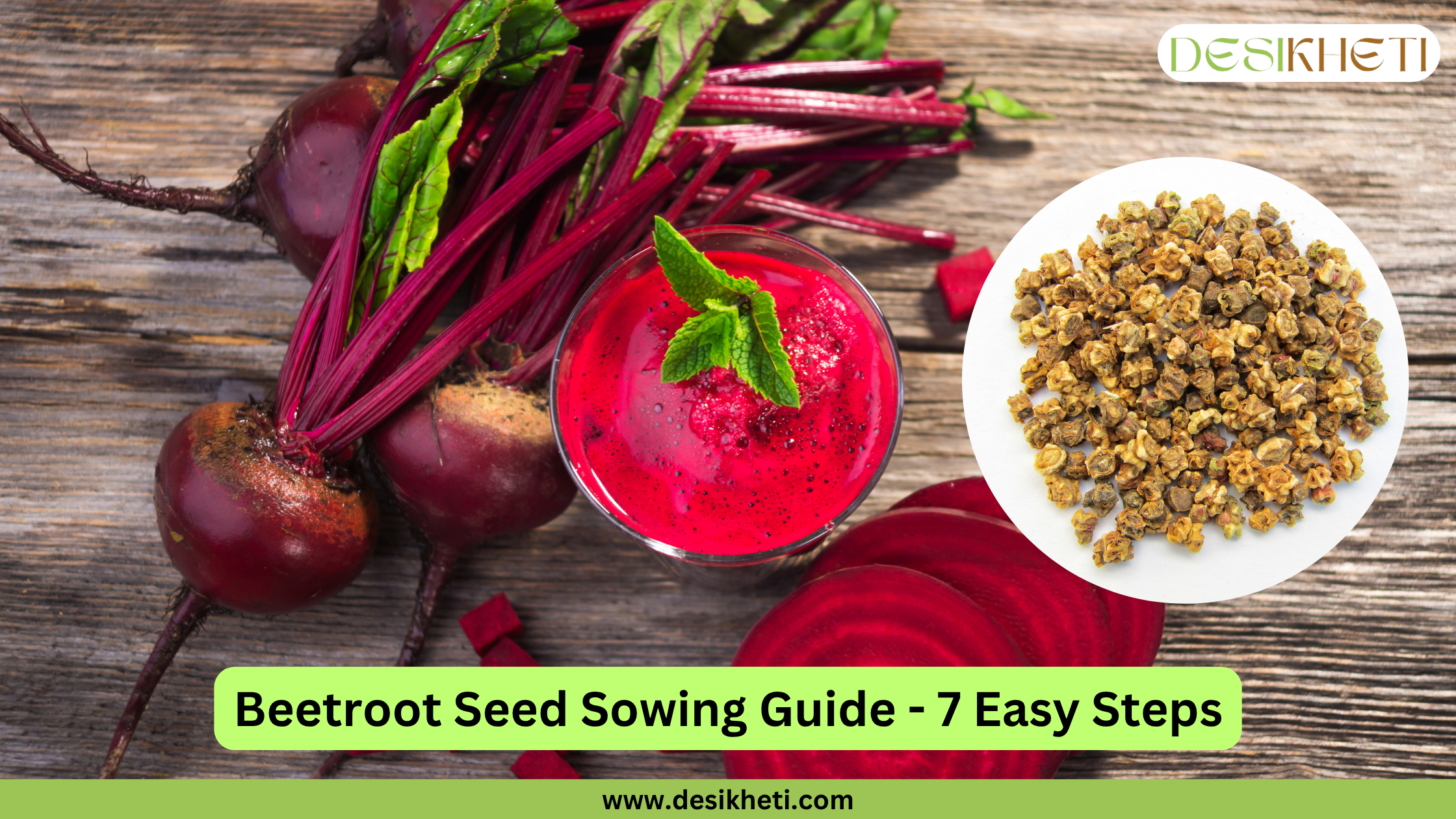Table of Contents
Introduction
Beetroot (Beta vulgaris) is a popular root vegetable known for its deep red color, earthy flavor, and numerous health benefits. It is widely used in cooking to make various dishes such as salads, soups, and pickles. Beetroot is rich in essential nutrients like iron, vitamins A and C, and antioxidants, and it also supports heart health, improves digestion, and boosts immunity.
Are you planning to grow beetroot? Then read this blog to learn about beetroot farming in 7 simple steps.

Step 1: Climate, Soil, and Season for Sowing Beetroot Seeds
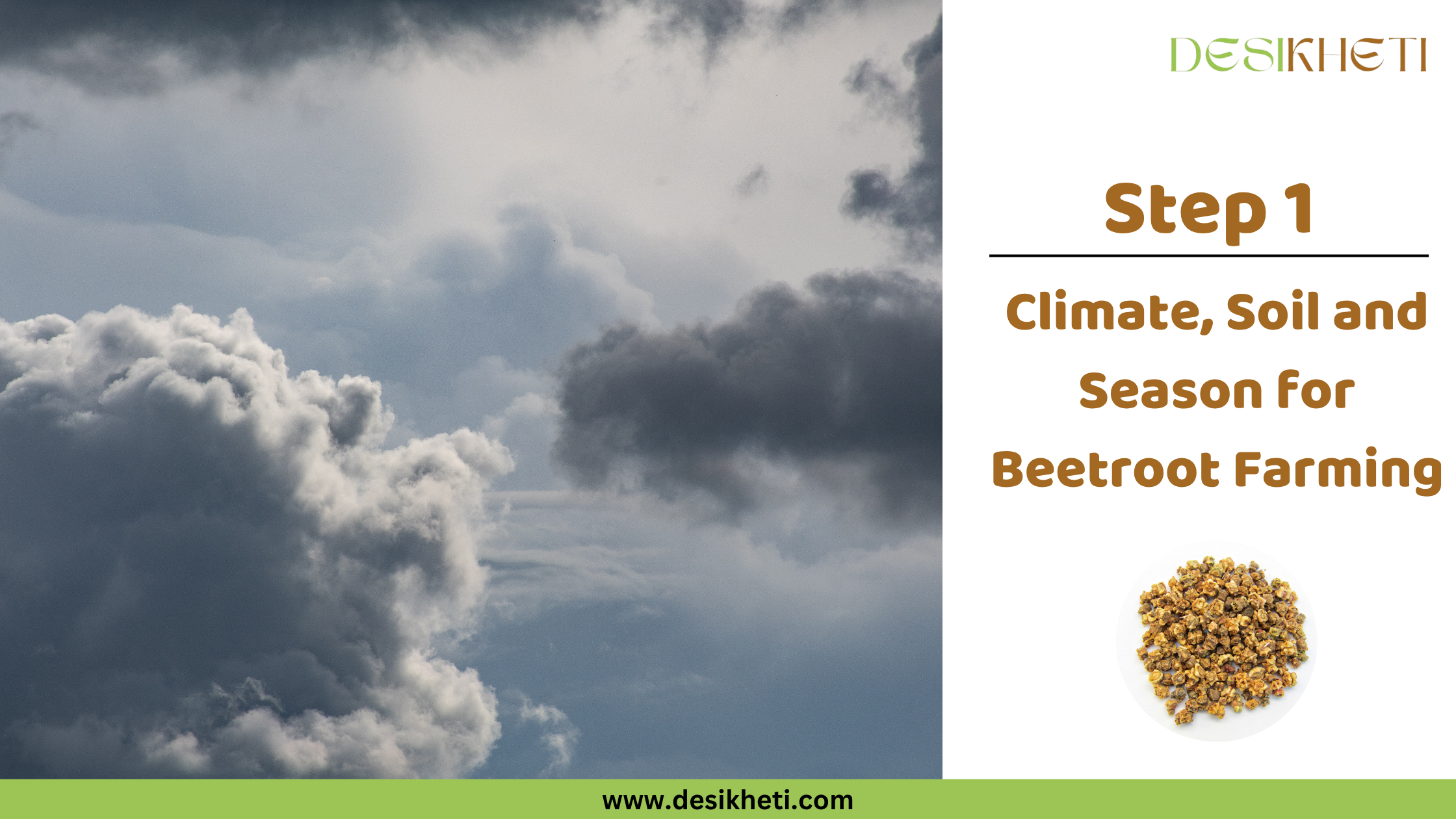
Climate for Beetroot Cultivation
Beetroot grows well in cooler climates, making it ideal for regions with moderate temperatures. While it can grow in warm weather, the best results in terms of color, texture, and sugar content of the roots are achieved under cool conditions. High temperatures can cause undesirable zoning in the roots, characterized by alternating light and dark red rings. Additionally, prolonged exposure to extreme cold (4.5–10°C) for around 15 days may lead to bolting, which affects growth. Beetroot also requires ample sunlight for optimal root development.
Soil for Beetroot Cultivation
Deep, well-drained loam or sandy loam soils are best for beetroot cultivation. Heavy clayey soils can cause poor germination and crop growth, as they tend to form a soil crust after rain or irrigation, which restricts root development. Heavy soils may also result in misshaped roots. Beetroot is highly sensitive to soil acidity, with the ideal pH range being between 6 and 7.
Season for Beetroot Cultivation
Being a cool-season crop, beetroot is grown during winter in plains and as a spring–summer crop in hilly regions. In the plains, the crop is sown during the months of September to November.
Step 2: Selecting the Right Beetroot Variety
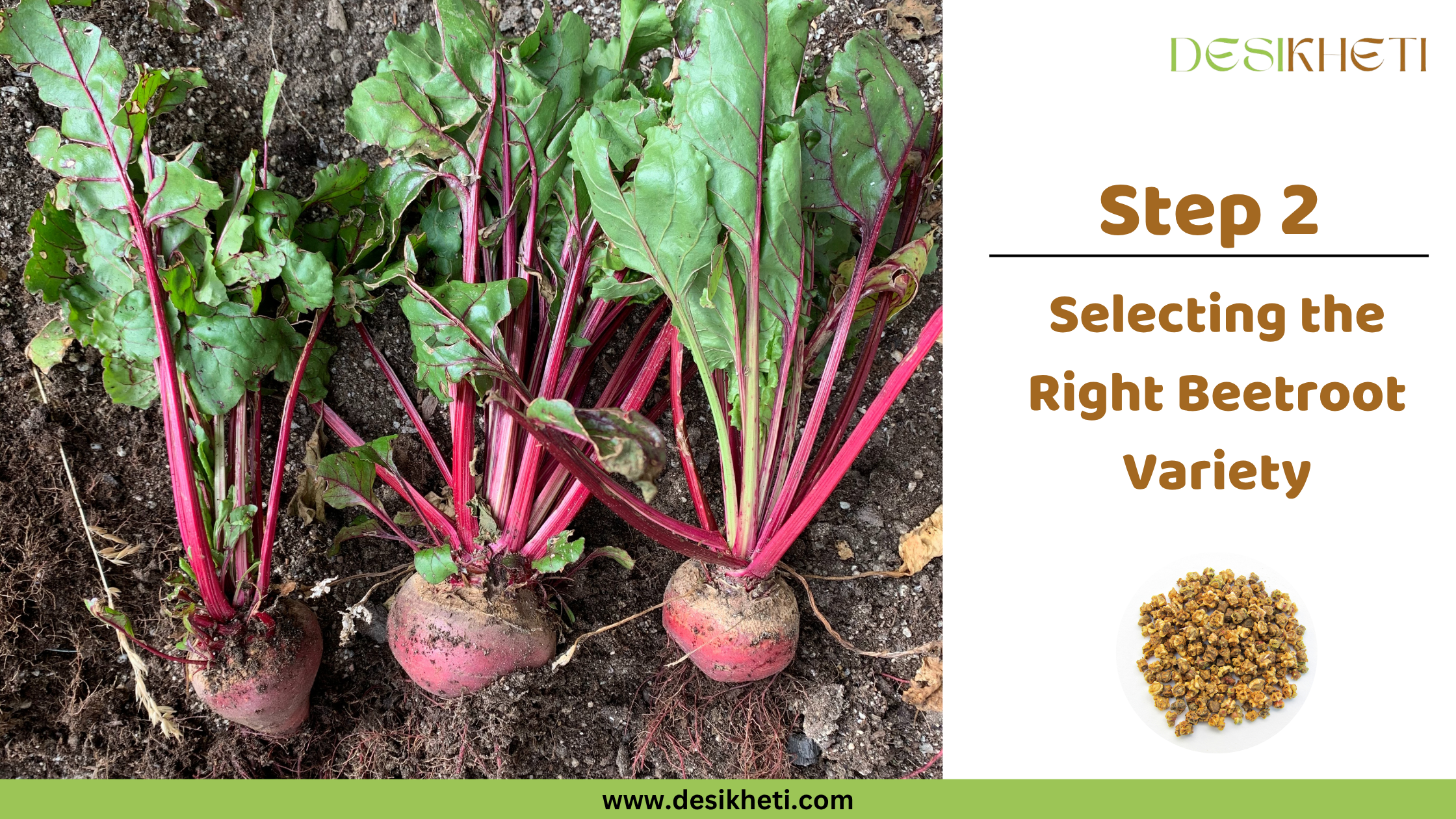
Various factors such as climate, soil, region, and colour need to be considered while selecting a beetroot variety. For your convenience, a few beetroot varieties are listed below.
Step 3: Procuring Quality Beetroot Seeds
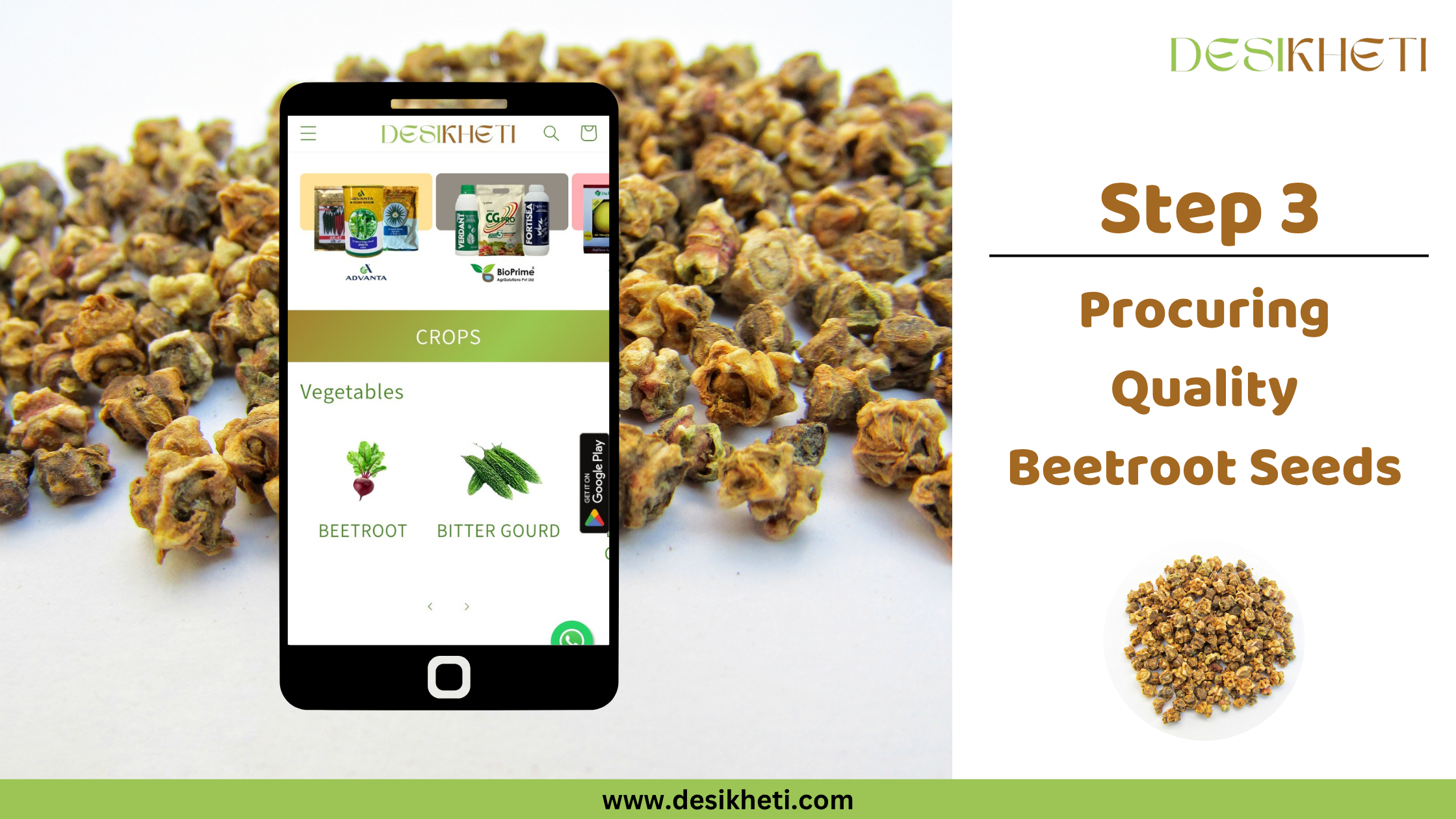
For successful beetroot farming, selecting high-quality seeds is essential. Even with the best cultivation practices, poor-quality seeds can lead to low yields and weak plant health. Looking for the best beetroot seeds? DesiKheti offers a wide range of premium beetroot seeds tailored to your farming needs. Browse our collection, place your order online, and have it delivered to your doorstep.
Step 4: Land Preparation for Sowing Beetroot Seeds
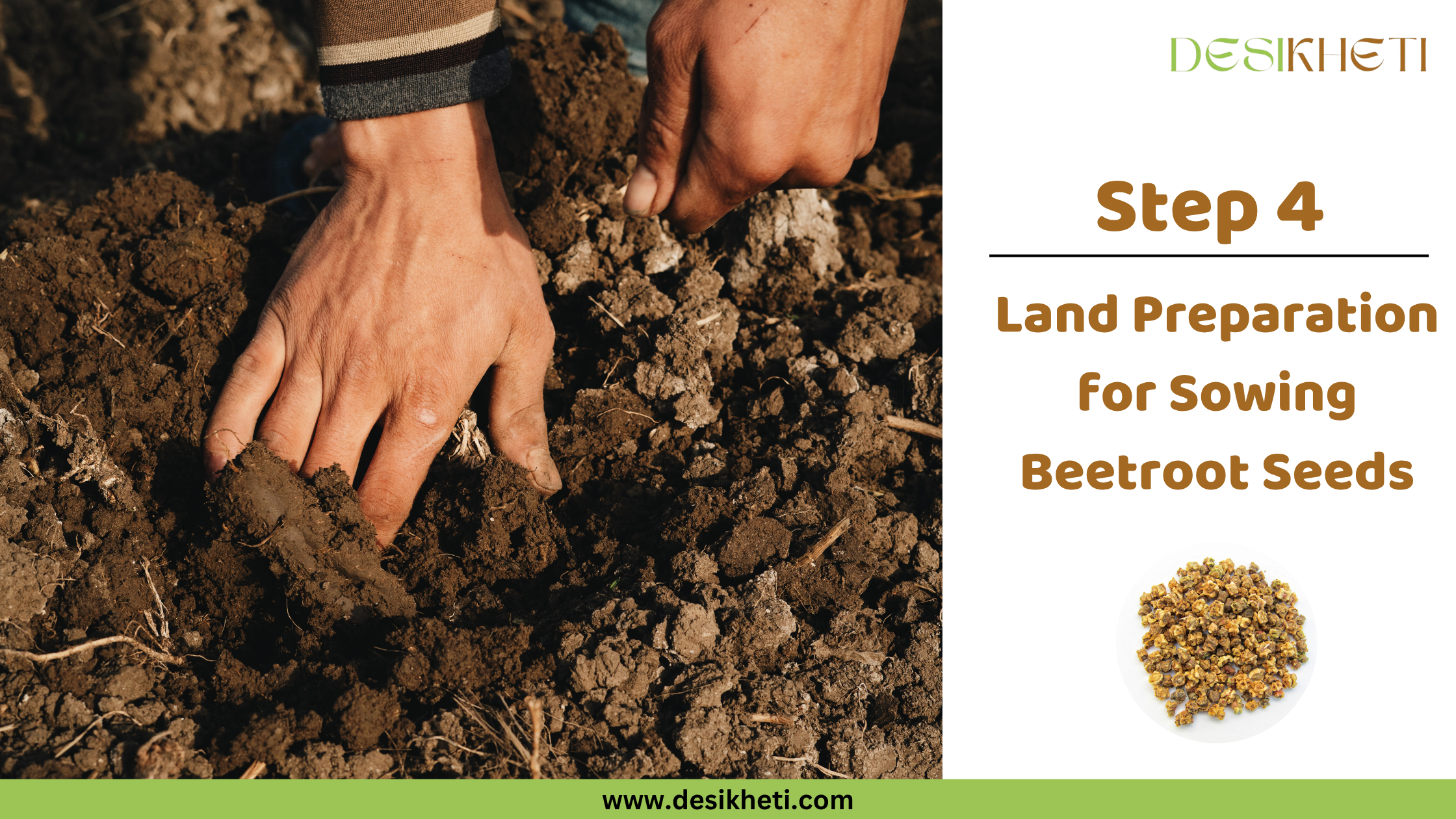
Plough the land to a fine tilth and to a depth of 20 cm. Three to five ploughings can be done, followed by harrowing. Level the soil during the final ploughing. Apply around 25 tonnes of FYM per hectare during the final ploughing.

Step 5: Sowing Beetroot Seeds
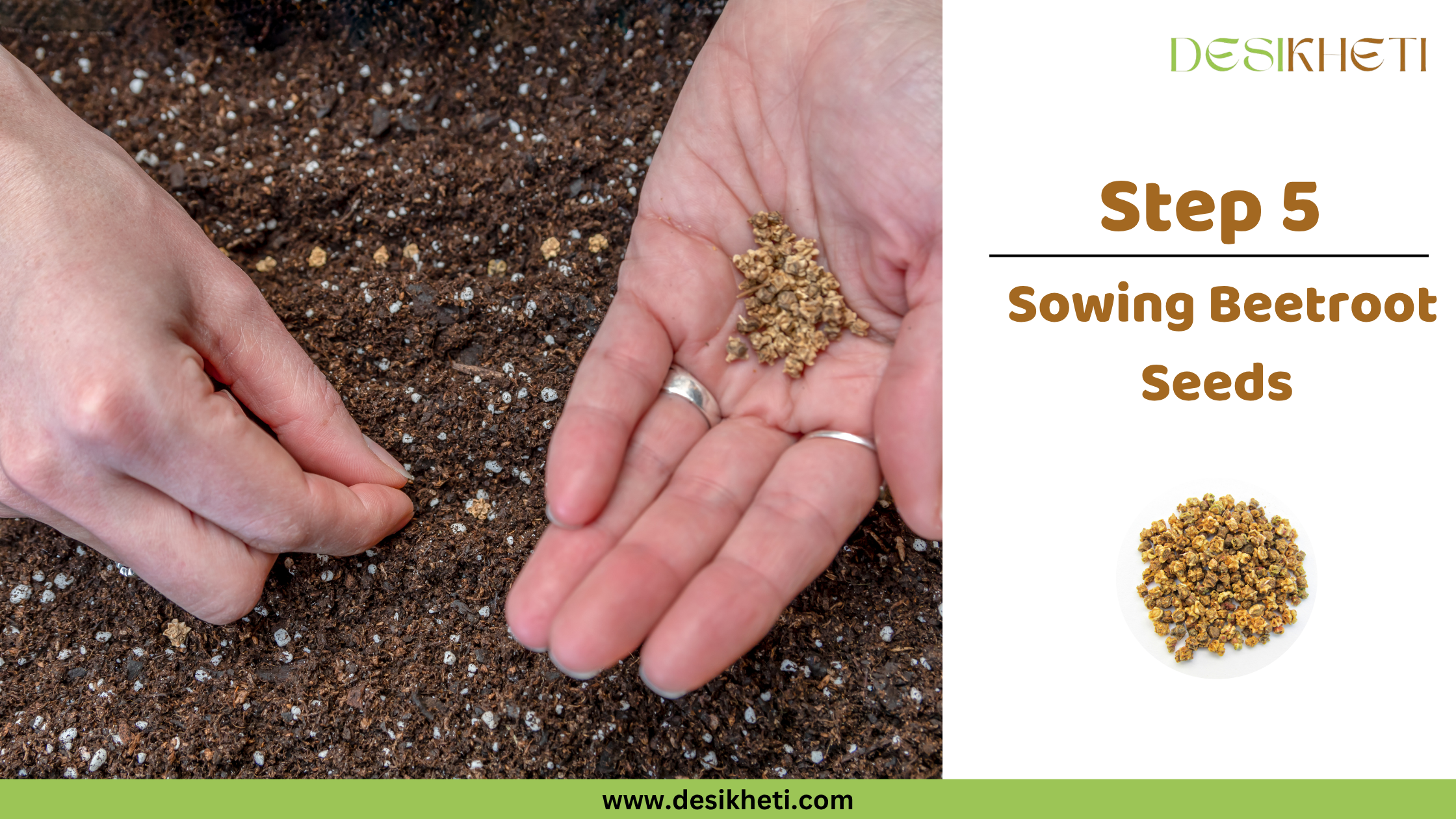
Either ridges and furrows or raised beds can be prepared for sowing the seeds. Ridges and furrows can be made with a gap of 20 to 30 cm. A raised bed of height 15 to 20 cm, width 120 cm, and a convenient length is made. Generally, a spacing of 10 cm between plants and 30 to 40 cm between rows can be followed.
Seeds can be soaked in water for 12 hours before sowing to improve germination. Water-soaked ‘seed balls,’ which contain 2–6 seeds, are drilled 2.5 cm deep in rows at a spacing of 45–60 × 8–10 cm. After sowing beetroot seed balls, thinning is crucial to ensure proper growth.
Step 6: Care After Sowing Beetroot Seeds
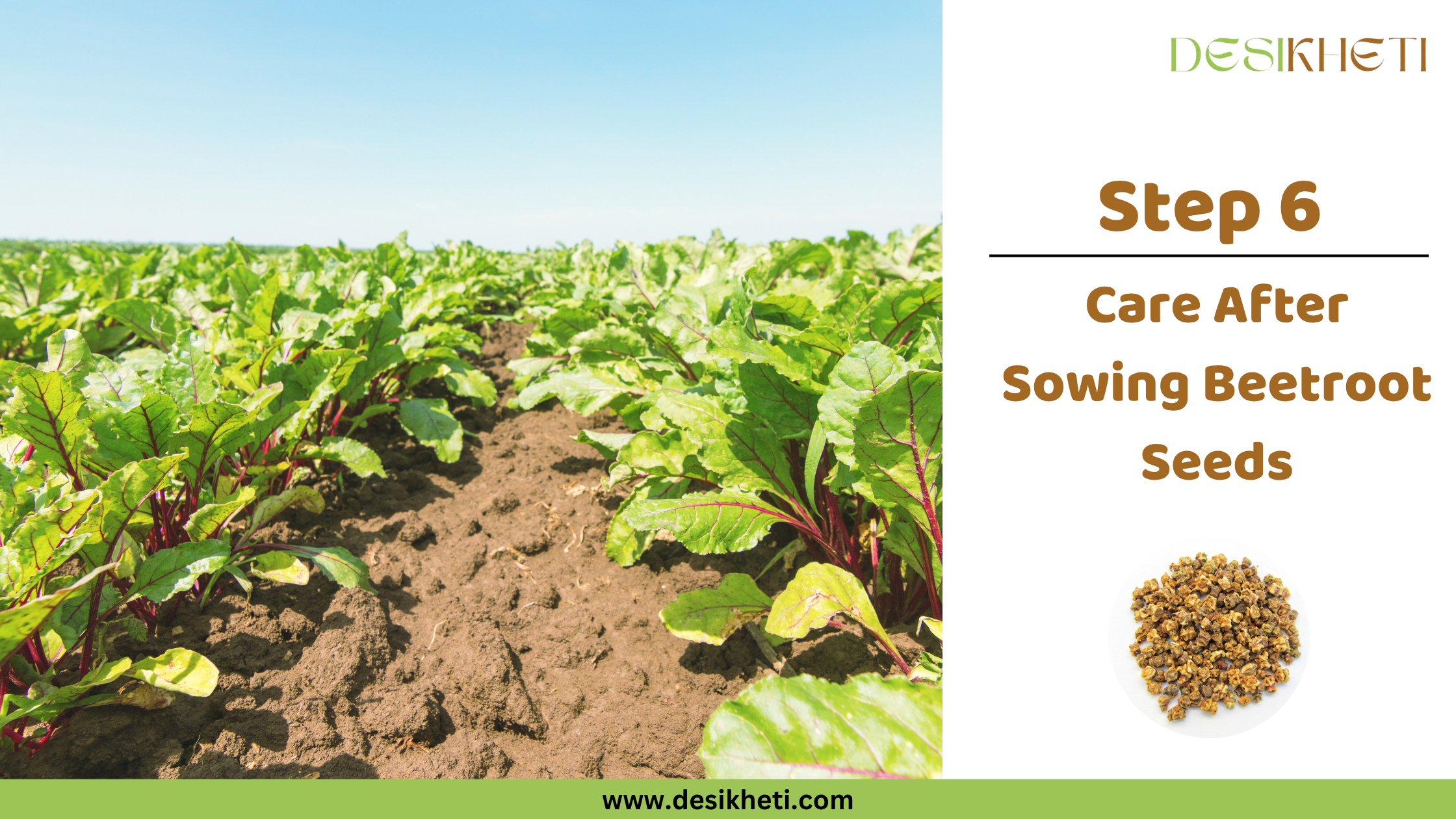
Water Management:
Irrigate immediately after sowing. Keep the soil consistently moist to support seed germination and healthy crop development. In the North Indian plains, beetroot typically requires 5–6 irrigations during summer and 3 irrigations in winter.
Weed Management:
To keep the field weed-free, light hoeing can be done during the early stages of the crop. Manual weeding can be carried out regularly depending on the level of weed infestation.
Earthing up may be done 35 to 40 days after sowing beetroot seeds by covering the roots with soil to support better development.
Step 7: Harvesting Beetroot

Beetroot is typically harvested when the tubers reach a medium size, with a diameter of 3–5 cm, as these are in high demand. Harvesting is done 8–10 weeks after sowing by gently pulling the tops by hand. The tops are then removed, and the tubers can be graded and marketed.

Common FAQs Related to Beetroot Seed Sowing
Q. What climate is best for growing beetroot?
A. Beetroot grows best in cool to moderate climates. Optimal growth occurs in temperatures ranging from 15°C to 25°C, with better root quality under cooler conditions.
Q. Which soil is best for growing beetroot?
A. Well-drained loam or sandy loam soil rich in organic matter, with a pH between 6 and 7, is ideal for beetroot cultivation.
Q. When can beetroot be harvested?
A. Beetroot can be harvested 8 to 10 weeks after sowing, when the roots reach a diameter of 3–5 cm.
Q. What is the scientific name of beetroot?
A. The scientific name of beetroot is Beta vulgaris.

Join DesiKheti Whatsapp Channel for regular updates, farming tips, and information on agriculture.
